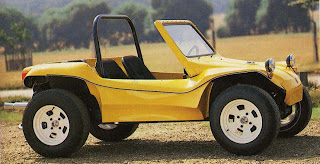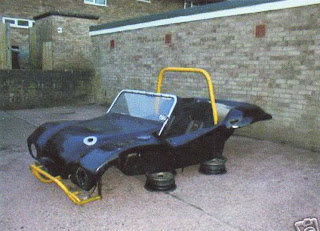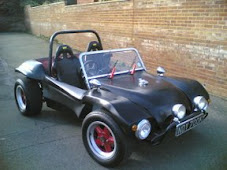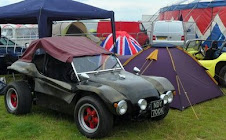 My Redline Linkage kit was on order from Weber I was excited about receiving the new one as the old linkage kit transversed the floor of the engine compartment. This used a poor bolting system to bolt a vertically mounted bearing. Pulling on the throttle would pull the vertical bearing over making the accelerator stay depressed. Clearly this was a poor design and the Redline one transversing across the carburettors was much easier to set up.
My Redline Linkage kit was on order from Weber I was excited about receiving the new one as the old linkage kit transversed the floor of the engine compartment. This used a poor bolting system to bolt a vertically mounted bearing. Pulling on the throttle would pull the vertical bearing over making the accelerator stay depressed. Clearly this was a poor design and the Redline one transversing across the carburettors was much easier to set up.The kit I had purchase came with the manifolds as part of the kit so I removed my manifolds that where short and touched the exhaust and replaced them with the Redline ones ensuring that the gaskets where seated well. I replaced the carburettors ensuring that the gaskets where oiled before the carburetors where seated onto the manifolds. The linkage kit was next and the top bar went on easily. However for some reason the linkage kit was too long to fit.

In error I tried to shorten them believing I could re tap the threads. This in theory was not so bad if I had picked the correct end to shorten. Opposing ends of the bar had left and right wound threads so that you could twist the rods to increase or decrease the bars length. I picked the left hand thread to shorten and only had a right hand tap to re- thread. As you can imagine this did not work at all and left me with a problem . My new linkage kit was lacking a vital part.
As luck would have it I searched Yell for a company that produced these ball joint kits. I found a company that produced them in my locale and telephoned them. They had moved north , but where still willing to help supplying me with lockable ball joints that could be removed whilst in situ. I was fortunate as this error cost me only £30. An new linkage kit would have been much more expensive.
The lockable ball joints turned up two days later they where exactly the correct length and with the quick release system fitted in about 2 minutes by removing the little wire and swinging it out and removing it to release the ball. The difference was amazing they took up all the slack in the system and allowed the linkage kit to be calibrated evenly.
 The engine was turned over it started and the engine ran beautifully. I wondered what the chassis /engine ran like. Several moments later I figured out that the engine could be started with a hot wire and the steering could be fitted to give some ability to steer the chassis. This coupled with a lawn mower petrol tank we where using and a child's car seat. The Chassis was finished and mobile! The chassis was very light and with no weight in the front the 100ft drive way was used most of the rest of the sunny afternoon driving backwards and forwards up and down the drive. This was the first real time test of all the components on the chassis. The braking component worked fine in fact the front was so good it seemed to lock up easily. The engine provided so much power it was easily able to push the front wheels off the ground. By the end of the day I was smiling from head to toe and covered by a huge grin. I was amazed that the project was looking so good. I had finished prepping the chassis and was trialing fitting of components in the tub prior to a quick respray.
The engine was turned over it started and the engine ran beautifully. I wondered what the chassis /engine ran like. Several moments later I figured out that the engine could be started with a hot wire and the steering could be fitted to give some ability to steer the chassis. This coupled with a lawn mower petrol tank we where using and a child's car seat. The Chassis was finished and mobile! The chassis was very light and with no weight in the front the 100ft drive way was used most of the rest of the sunny afternoon driving backwards and forwards up and down the drive. This was the first real time test of all the components on the chassis. The braking component worked fine in fact the front was so good it seemed to lock up easily. The engine provided so much power it was easily able to push the front wheels off the ground. By the end of the day I was smiling from head to toe and covered by a huge grin. I was amazed that the project was looking so good. I had finished prepping the chassis and was trialing fitting of components in the tub prior to a quick respray.































